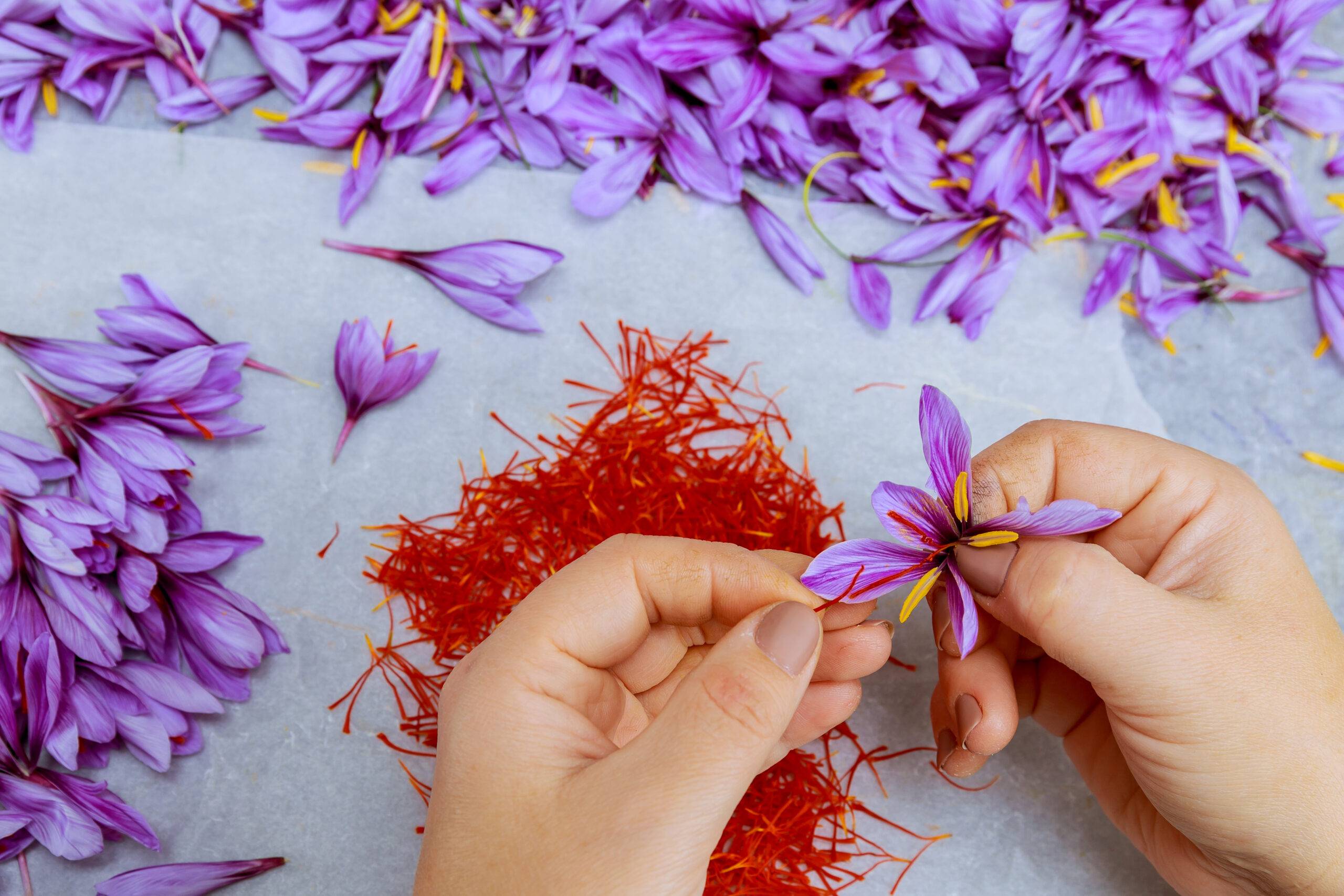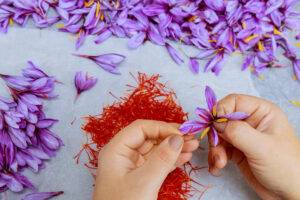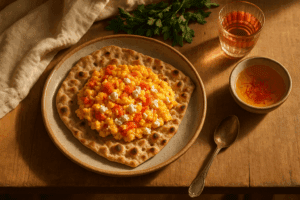Saffron stands apart as the world’s most precious spice, not just for its flavor and color, but for the remarkable human effort behind every golden thread. From the moment a crocus blooms to the final drying of the stigmas, saffron cultivation is a story of patience, precision, and care. Let’s explore why saffron is so hands-on and why that matters for quality and tradition.
From Flower to Thread: The Labor Behind Saffron
Saffron comes from the Crocus sativus flower, which blooms only once a year, usually in autumn. Each flower produces just three red stigmas, what we know as saffron threads. The process of harvesting saffron is entirely manual and requires a gentle touch at every step.
Hand-Picking at Dawn
Harvesters must rise before sunrise, because saffron flowers open early in the morning and wilt quickly under the sun. Workers move through the fields, picking each delicate blossom by hand to avoid bruising the petals or damaging the precious stigmas inside. This work is time-sensitive and must be done within a few hours each day during the brief harvest window.
Separating the Stigmas: Precision and Skill
After picking, the flowers are taken indoors, where skilled hands carefully separate the crimson stigmas from the rest of the flower. This step demands patience and a steady touch, as the threads are extremely fragile. Each stigma is then laid out to dry, a process that must be closely monitored to preserve aroma, color, and potency.
Time and Numbers: Why Saffron Is So Rare
It takes roughly 150,000 flowers to produce just one kilogram of dried saffron. Every single thread is the result of hours of focused, hands-on labor. From picking to drying, the entire process can take several weeks, with each step performed by human hands rather than machines.
Why This Hands-On Approach Matters
Machine harvesting simply cannot match the care and selectivity of skilled workers. The hands-on process ensures only the best threads are chosen, maintaining the purity and quality that define premium saffron. This tradition connects generations of farmers, preserving both cultural heritage and the unique properties of this golden spice.
Final Thoughts
When you add saffron to your recipes, you are not just enjoying a spice. You are experiencing the result of countless hours of meticulous, hands-on work. Every golden thread reflects a commitment to quality, tradition, and the enduring beauty of human craftsmanship.




